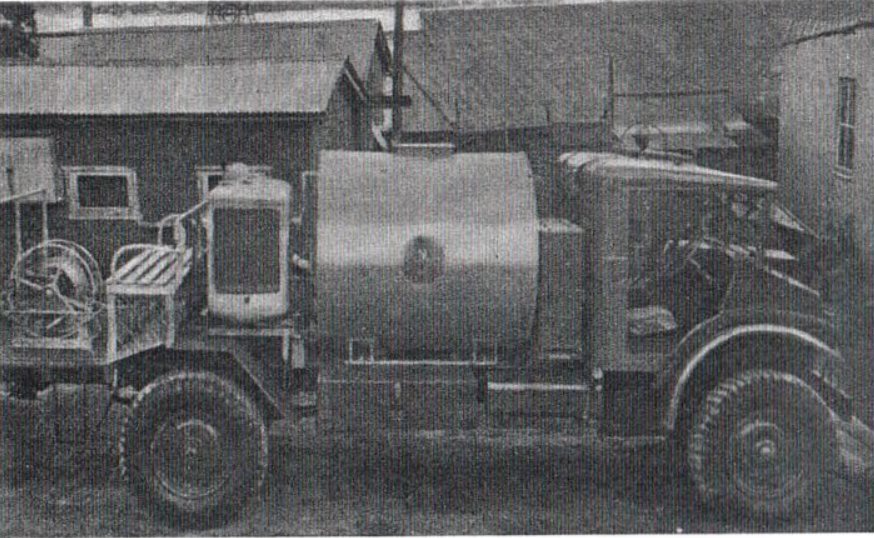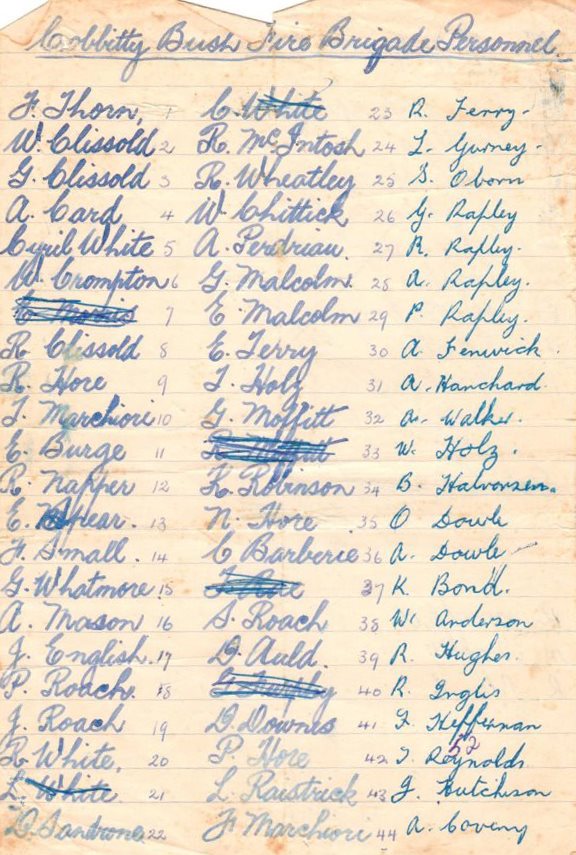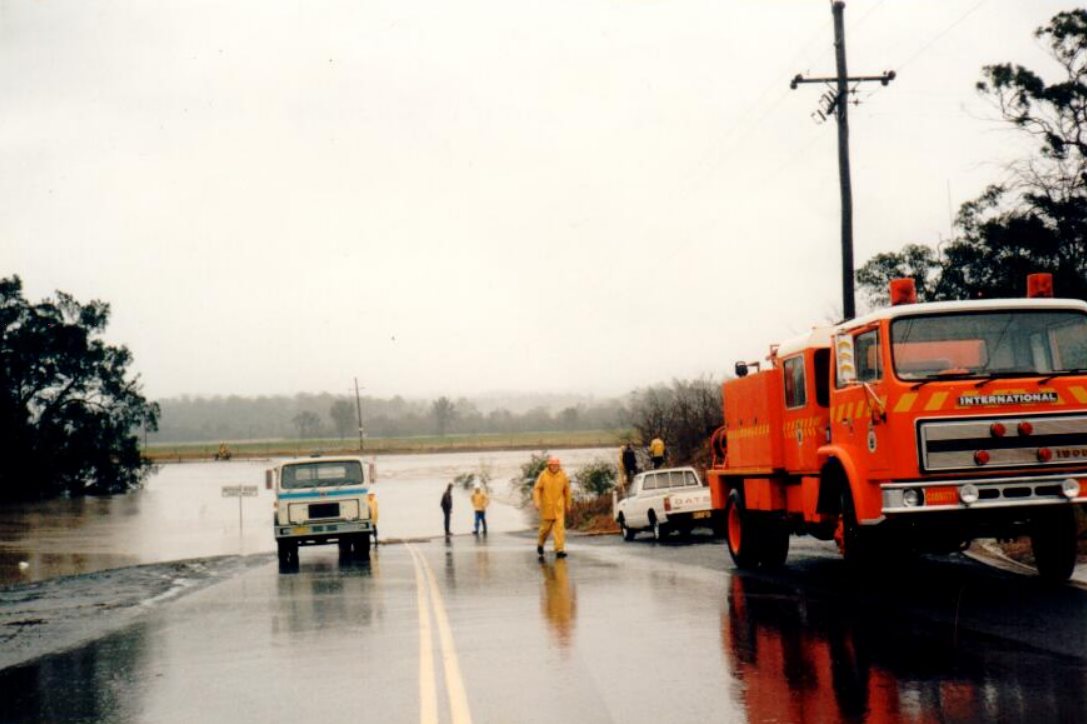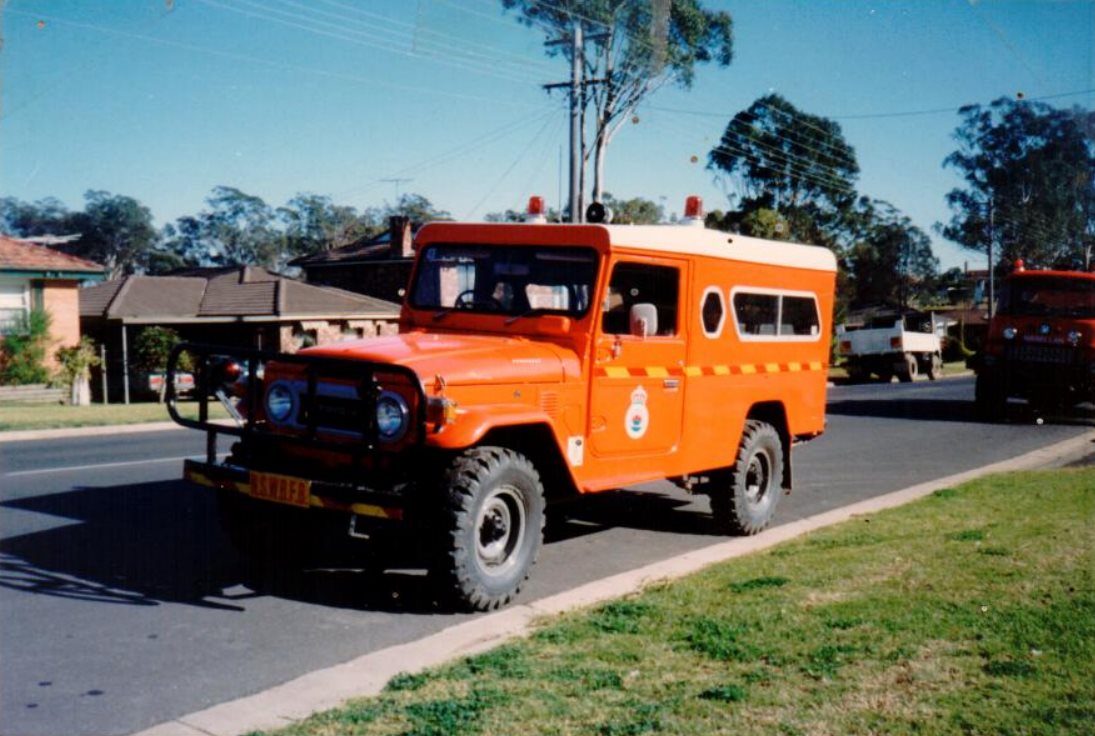The History of Cobbitty Rural Fire Service
Serving Cobbitty and the Macarthur region since 1950The Beginning
In 1949 the need for bush fire protection within the Cobbitty area was emphasised by the many fires which occurred within the area. Some fires were travelling by long distance spotting from as far afield as the Blue Mountains to our west.
During this period a considerable demand was placed on the time and energy of local residents and farm personnel who were frequently called upon to battle larger scale fires with little more than basic farm equipment and abundant enthusiasm.
The late Wilfred Chittick, a long term identity and farmer of the Cobbitty area, was involved in combating most of these outbreaks and saw the urgent need for an organised method of defence against the increasing fire problem within the local area.
He responded to this need by arranging a public meeting at Cobbitty Public Hall on the 12th of November 1949. This meeting was attended by some 13 local residents, who formed the nucleus of the initial Cobbitty Bush Fire Brigade. A public meeting was then held on the 7th of July, 1950 where Alderman N. Hore was elected Chairman. He stated that the purpose of the meeting was to form a Bush Fire Brigade under the existing local government ordinance. It was wholeheartedly agreed at the meeting that a need for the formation of the brigade take place. Thus the first election of office bearers took place with Mr Hore being elected as President and Mr F. Thomas the Brigade Captain. Hence, the formation of the new Cobbitty Bush Fire Brigade began.
Early Days
The brigade took over the fire protection of the Cobbitty area which previously was covered by the Bringelly Bush Fire Brigade, who themselves protected quite a large area towards the Blue Mountains.
Numerous offers were made at that first official meeting to convey fire fighting personnel to and from the fire ground, as no fire brigade vehicle existed at that early period.
In its early stages, the brigade was seriously hampered by the lack of equipment, as the following list can verify.
Equipment List 1950
- 150 Gallon Water Tank
- 10 Knapsack Sprays
- 1 Foam Spray
- 2 First Aid Kits
- 2 Water Bags
- Fire Beaters
- Shovels
Although this equipment was quite functional the brigade still had no equipment with which to apply water in large volume, and so in a meeting in November 1951, the members voted unanimously to purchase a Moffitt Virtue pump and engine. The main problem with such an expensive purchase was the lack of brigade funds and so it was determined to place a levy on all farm owners within the area. The local farmers were more than happy to respond in the knowledge that their lands were to become better protected from the frequent ravages of fire, which were to prevail throughout the 1940/1950’s period.
Scale of Levies
- 1 Pound for 1 to 20 Acres
- 2 Pounds for 20 to 100 Acres
- 3 Pounds for over 100 Acres
The brigade’s first call to action was during the latter part of 1951, where a large outbreak occurred at Mr Keith Whiteman’s property. There was a large turn out of Cobbitty volunteers who assisted the Camden Town Brigade in containing the fire and its eventual extinguishment using nothing more than knapsack sprays and leather beaters.
In 1952, at the exorbitant cost of 112 Pounds, the brigade took possession of their first mobile pumping unit. This new addition to the brigade’s equipment list, along with some hose and fittings, was housed in Cobbitty Road at the property of Mr Albert Card, with equipment from time to also being stored at Cobbitty Hall.
It is noted in the minutes of the Annual General Meeting, held on the 8th of January, 1952, that the ‘Camden Town Brigade’ turned out to a number of fires in the Cobbitty area. Each time that they responded, a charge of 15 Pounds was forthcoming to the Cobbitty Brigade for services rendered. This was quite a large sum of money in those times and a fee that the brigade could well do without. It became apparent that a more mobile method of attending outbreaks of fire was required, one in which the member and their equipment could travel together, rather than the volunteers making their own transport arrangements, and waiting for equipment to be brought by others.
A second dilemma also became apparent. With Cobbitty’s residents spread over quite a large area, difficulty arose in alerting the firefighters to an outbreak. This problem was soon overcome in 1953 when the Camden Council loaned the Brigade an air raid siren. Originally installed in Camden during World War II the siren was positioned at Cobbitty Post Office and was activated by the Captain to summon his crew to the equipment shed. In later years the siren was moved, firstly to the local service station, then to the old fire station, before being decommissioned.
The first major advance came in the early 1950’s when, as a fully constituded brigade under the new Bush Fires Act of 1949, Camden Council provided the brigade with an ex-army Blitz Tanker. This new acquisition provided quick mobility, which was previously a major problem, in the Brigade area of operations. As the brigade and its new equipment grew in number, Mr Card’s shed became inadequate, so in 1964 Council also provided a building, on the corner of Cobbitty Road and Cut Hill Road, to house the vehicle and equipment.
The land at this site was owned by Mr Clissold (a brigade member), and was sold to council for an unknown sum of money. The original site was meant to be north of the telephone exchange, however, the surveyors marked off the portion to the south accidentally. As this portion was in Mr Clissold’s garden an extra 10 Pound cost to the purchase price was made as compensation.
The 1941 Blitz Tanker remained as the operational unit of Cobbitty Brigade until 1972 when a 1967 Bedford truck provided by Camden Council replaced it. This vehicle was converted to a fire fighting unit by the expertise and dedication of members including Lew and Alf Raistrick, Tony Marchiori, and Peter Rabbidge, who spent long hours in making the tanker one of the most efficient units within the Camden Bush Fire Brigade system. As an added protection factor the Brigade also maintained two towable water trailers which were stationed at the large properties of ‘Denbigh’, on the Northen Road, and at ‘Shipton’, in Cuthill Road.
The Bedford gave good service for a number of years and had a major modifications carried out by brigade members which included the fitting of a crew cab and updating the pump. By the mid 1980’s after a number of meetings Camden Council agreed to buy a second hand 1983 International truck (cab chassis only) which was re-built as a fire fighting tanker.
The agreement with council was that they would only pay for the cab chassis and the brigade would have to raise the money required to build the tanker. Some of the money raised went towards new tyres, steel to build the body and paint.
The building program was was very slow as it took a lot of time to raise the money required for these items. The new tanker was built and painted by brigade members in their spare time.
It was around this time that the old siren was replaced by 10 reconditioned pagers which were donated by Narellan Pools, needless to say the neighbours were very happy to see the siren go.
During the mid 1980’s, it was determined that a new shed was required to house the brigade. This was due to a number of factors. Firstly, manoeuvring the truck into and out of the shed had become hazardous due to traffic changes at the corner of Cobbitty Road and Cut Hill Road. There was also insufficient parking for the volunteer crews in the event of a call-out, and only one tanker could be garaged, leaving a second vehicle outside exposed to the elements.
After many years, a new station was constructed on Cobbitty Road, approximately 200 metres from the original station. This is the site of the present station built on land owner by the university and was officially opened on the 27th of February 1993 by Ald John Murray. The new fire station was once again made possible with the support of brigade members who donated their time to ensure that their equipment had adequate protection from the weather and theft. The brigade relied heavily on donations and other forms of fund raising to provide this new building which currently houses two tankers and the catering vehicle.
Today
The Cobbitty Rural Fire Brigade provides early defense against many grass and bush fires which occur in the western sector of the Camden Municipality.
Volunteer members from our brigade have also provided support all over New South Wales, Australian Capital Territory and Victoria.
Due to the growing population of the surrounding area, the brigade’s role within the community is changing with an increasing number of callouts relating to motor vehicle incidents as well as flood and storm damage. The brigade is also very active in community education through “Get Ready Weekend”, street meetings, school visits attendance at the Camden Show, Oran Park Community Carols and the Mater Dei Fair.
Life Members
- Alf Raistrick (1991)
- Eric Biddle (1999)
- John Murray (2010)
- Peter Rabbidge (2010)
- Ron Usher (2010)
- Edgar Gaunt (2014)
- Cyril White (2015)
We need volunteers!
Why Volunteer?
Cobbitty Rural Fire Brigade volunteers are local people (possibly even your friends or neighbours) who need your help to keep our community safe during bush fires and other emergencies. Some of our members are firefighters, other members fulfil important roles in areas like administration, communication, catering, community engagement and training (just to name a few).
Why choose Cobbitty Rural Fire Brigade?
People choose to join the Cobbitty Rural Fire Brigade for many reasons. Some want to protect their families, their friends, their assets and their way of life. For many it is about being part of a wonderful tradition and an organisation with a very proud history. Volunteering with our brigade will offer you the opportunity to learn new skills that will not only assist you with voluntary roles, but in day-to-day life and maybe even your workplace. It’s also a chance to form friendships and meet other people who live in our community.
You won’t regret it
Whatever your reason, be assured that when you join the Cobbitty Rural Fire Brigade you are joining a team of hard-working, professional and dedicated volunteers who are committed to giving back to our local community.







